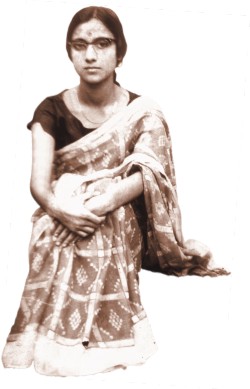STYLE FILES
60s dacca
Maheen Khan
Fashion designer,
Mayasir
 The creation of East Pakistan
The creation of East Pakistan
The idea of a separate Muslim state emerged in the 1930s. It gained popularity among Indian Muslims after 1936, when the Muslim League suffered a decisive electoral defeat in the first elections under the 1935 constitution. On March 23, 1940, Muhammad Ali Jinnah, leader of the Muslim League, publicly endorsed the "Pakistan Resolution" that called for the creation of an independent state in regions where Muslims were a majority.
At the end of World War II, the United Kingdom, under considerable international pressure to reduce the size of its overseas empire, moved with increasing urgency to grant India independence.
The Congress Party and the Muslim League could not, however, agree on the terms for drafting a constitution or establishing an interim government.
In June 1947, the UK declared it would grant full dominion status to two successor states--India and Pakistan. Pakistan would consist of the contiguous Muslim-majority districts of western British India, plus parts of Bengal. The various princely states could freely join either India or Pakistan.
These arrangements resulted in a bifurcated Muslim nation separated by more than 1,600 kilometers (1,000 miles) of Indian territory. West Pakistan comprised four provinces and the capital, Lahore. East Pakistan was formed of a single province. Each province had a legislature. The capital of federal Pakistan was at Islamabad.
Pakistan's history for the next 26 years was marked by political instability and economic difficulties. Dominion status was rejected in 1956 in favour of an "Islamic Republic within the Commonwealth."
 Attempts at civilian political rule failed, and the government imposed martial law between 1958 and 1962 and 1969 and 1972. The government was dominated by military rule and oligarchies all rooted in the West. Significant amount of national revenues went towards developing the West at the expense of the East.
Attempts at civilian political rule failed, and the government imposed martial law between 1958 and 1962 and 1969 and 1972. The government was dominated by military rule and oligarchies all rooted in the West. Significant amount of national revenues went towards developing the West at the expense of the East.
The people of the Eastern wing began to feel increasingly dominated and exploited by the West. Frictions between West and East Pakistan culminated in a 1971 army crackdown against the East Pakistan dissident movement led by Bangabandhu Sheikh Mujibur Rahman, whose Awami League (AL) Party had won 167 seats out of 313 National Assembly seats on a platform of greater autonomy for the eastern province.
Bangabandhu Sheikh Mujibur Rahman was arrested and his party banned. Many of his aides and more than 10 million Bengali refugees fled to India, where they established a provisional government. India and Pakistan went to war in late November 1971. The combined Indian-Bengali forces soon overwhelmed Pakistan's army contingent in the East and the Pakistani forces surrendered on December 16, 1971,
 1960s Dacca
1960s Dacca
I shall be discussing this decade and the length of time as a fabulous inspiration that revolutionised our sense of fashion in Bangladesh. Our modern fashion industry definitely reflects upon and is clearly rooted in this era. Local trends are changing and moving forward with fashion demands, but in no other time in history did we make such a great leap of design consciousness as we did in the 1960s. It defines and marks the beginning of our distinctive demand for an individual look.
Saris
The majority of women continued to wear saris but for the first time the urban middle class was experimenting with tailored finished garments in both ethnic and western wear. A new era had arrived with independence, self-determination and freedom.
Wash and wear
Georgettes and other synthetic materials were worn widely. Psychedelic, busy, large bold prints and paisleys were big as fashion statements. Brocade and Benarasi borders were applied to these saris. Mirror work on borders in Sindhi style and other fancy embroidery with metal threads and zari work were fashionable. Lace and crochet as borders were also used as embellishments. The transparency and fluidity of the materials were very liberating.
Light, figure-hugging materials were preferred. Women were breaking out of their social conventions and were challenging the limits of freedom. Worn tightly and pinned in place with draped pleats and sculpted to fit women's figures; the aachals were very short and only hung like scarves.
Traditional weaves
Tanchoi benarasi and tissue benarasi were all the rage. Gold and silver embellishments as well as fine floral motifs were used widely. Bold woven checks with slightly wider borders and shorter end designs with classic corner motifs were also commonly in use. The colours got brighter, and bolder in courageous combinations and subtlety was a thing of the past.
Embroidered saris
Gold and silver embroidery was used vividly and confidently across the yardage of material. Glitter, shimmer and sparkly materials were exciting and attractive to many. Sequence beads and lacing were generously used to create patterns of interest. Embroidery was used on nets, muslins, georgettes and chiffons.
Fashionwear
60's fashion reflected the spirit of revolution in the air. Kameezes grew short while hair grew long. Patterns were bright and busy.
A-line mini-kameezes and tight tailored churidars or fitted shalwars were hot in the early 1960's, especially when paired with a turtleneck sweater in winter. Chundris (a kind of pleated twisted scarf) were short and would hang over the neckline. Interesting hand- knitted sweaters and thick yarns were very popular, as were tweed and other thick materials. Some times knee-length, the kameez was matched with longer jackets and was particularly popular in thicker materials.
The influence in the mid to late 1960's prompted many women to wear slacks, not to mention hip-hugging and slightly flared bell-bottom pants. Bright patterns and ethnic influences could also be seen in most trends. Men started to wear shorter Punjabis with narrow pajamas.
Jackets were short and straight initially, but bright colours and double-breasted jackets became the norm as the decade progressed and fashion loosened up. Ties became very thin to thick and very bright, when they were worn at all. The high collared Mujib coat also became very popular.
The hippie movement has increasing influence in 60's fashion; men's clothes became much more casual. Slightly flared bell-bottom pants became the norm, as did brightly coloured shirts. Turtlenecks and interesting knits also started to show up. Ethnic influences could be seen in casual clothing, for both men and women. The fitted tailored look for women was considered trendy as kameezes were darted and buttoned to fit perfectly on the contour. I believe the styles of the era were a great way to add class and sensuality and continue to succeed and work even today in any modern wardrobe.
1960s hairdos are recognisable by the addition of scarves or bandanas across the top of the head, tied underneath the hair, at the nape of the neck. Hair was accessorised with flowers or little hair clips. It was also pulled back leaving long pieces flowing on the shoulders.
Accessories
Beads epitomised the 60s look here and elsewhere. Beaded neckpieces and bracelets, glass bangles and the idea of costume jewellery took off as a major accessory. Bright acid colours and contrast mix and match compositions were very hip. Popular choices were large hoops, multiple bangles in different oversized shapes and incredible statement rings.
Photographs taken from the personal album of Rosie Rasheed
